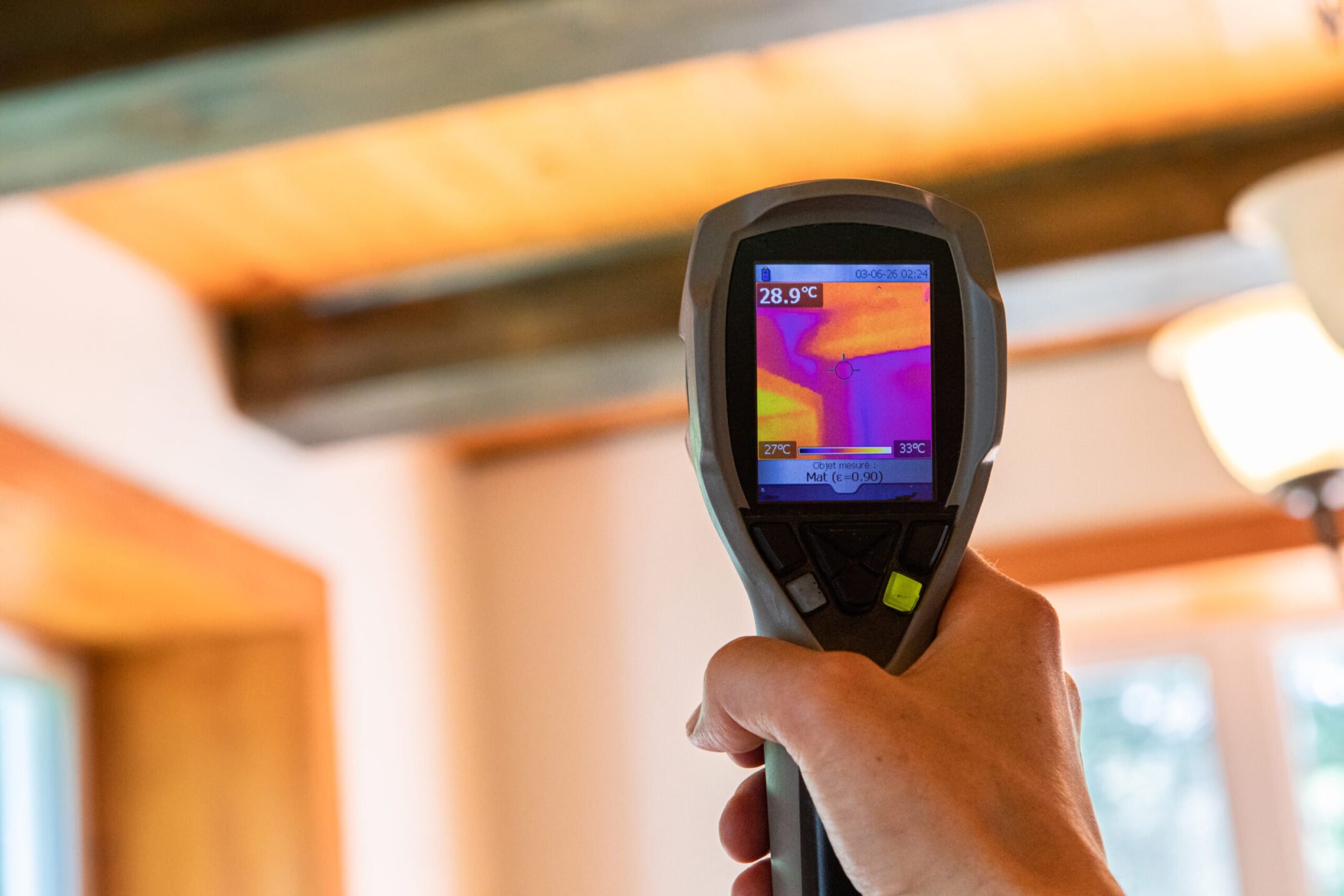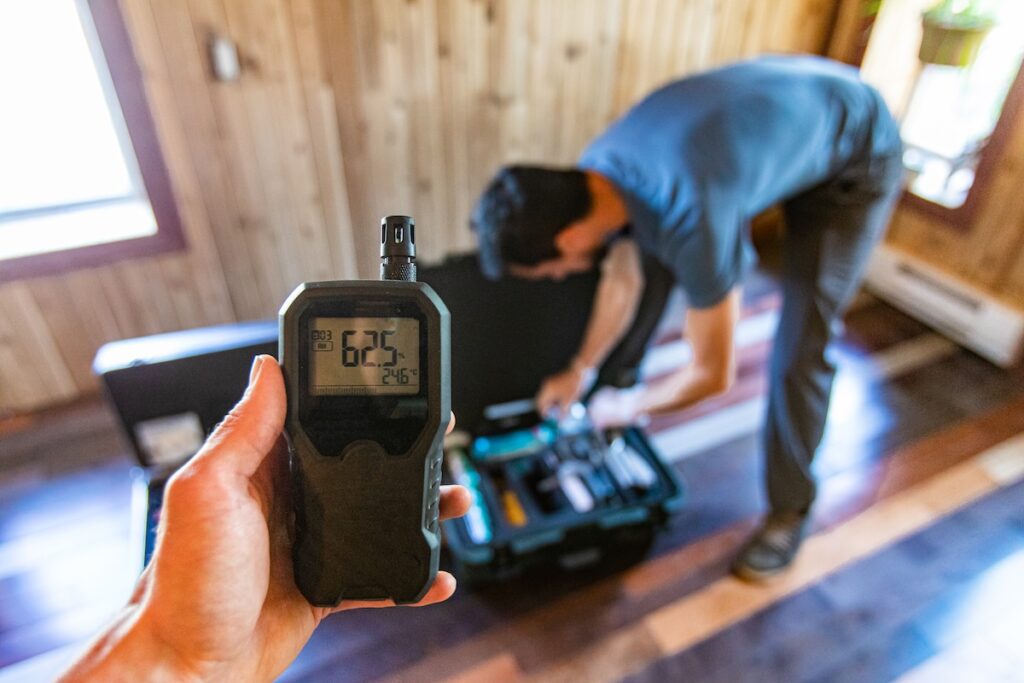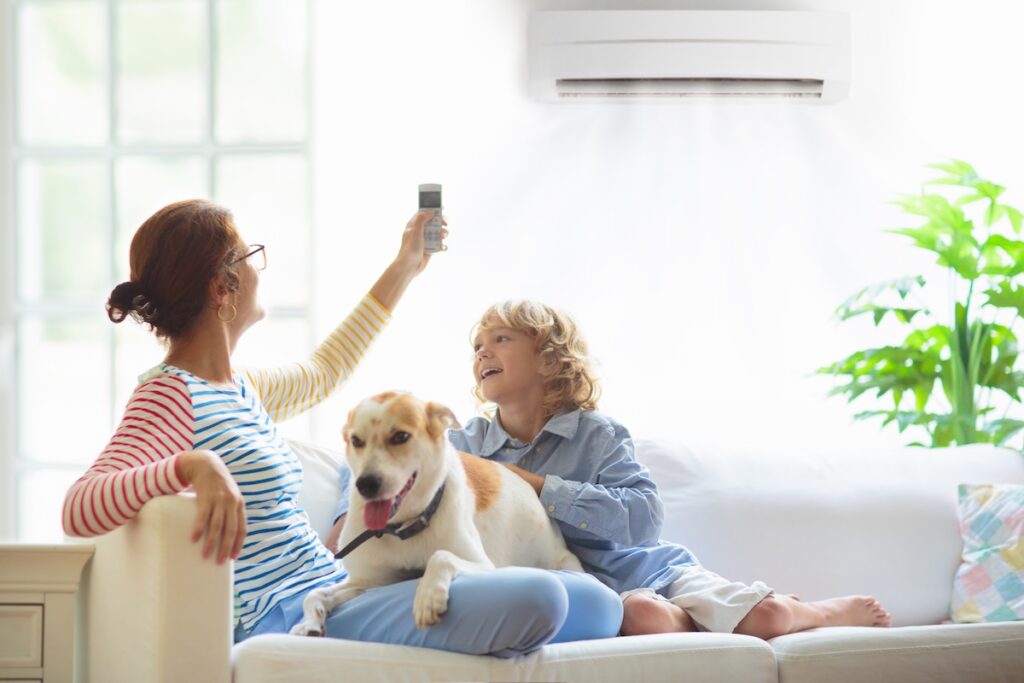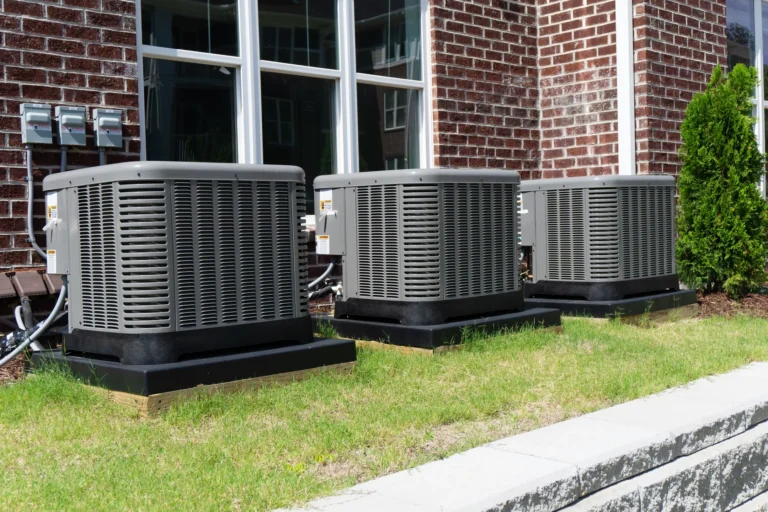
Indoor Air Quality Testing: Why It’s Important?
The air you breathe inside your home may be more polluted than the air outside. While most homeowners focus on visible issues like leaky faucets or broken appliances, indoor air quality often goes unnoticed until health problems arise. Professional indoor air quality testing can identify hidden contaminants and provide the data you need to create a healthier living environment for your family.
This comprehensive guide covers everything you need to know about indoor air quality testing, from understanding common pollutants to choosing the right testing methods. You’ll discover the health benefits of clean air, learn when to schedule testing, and find out how professional HVAC experts can help improve your home’s air quality. Here’s why we’ll cover:
- Indoor air quality basics
- 7 benefits of testing
- When to test
- Fixing poor air quality
🔎 Understanding Indoor Air Quality

Indoor air quality refers to the condition of air inside buildings and structures, particularly as it relates to the health and comfort of occupants. Poor indoor air quality can result from various sources, including outdoor pollutants that enter your home, activities inside your house, and problems with your HVAC system.
Common indoor air pollutants include dust mites, pet dander, pollen, mold spores, volatile organic compounds (VOCs), carbon monoxide, and radon. These contaminants can accumulate over time, especially in well-sealed homes with limited ventilation. Your HVAC system plays a crucial role in managing these pollutants by filtering air and maintaining proper ventilation throughout your home.
Common Indoor Air Pollutants
- Biological Contaminants: Mold, bacteria, viruses, and dust mites thrive in humid spaces like basements, bathrooms, and around leaky pipes. They can trigger allergies and respiratory issues.
- Chemical Pollutants: VOCs from cleaning supplies, paints, furniture, and building materials can cause headaches and long-term health effects. Formaldehyde in pressed wood products and fabrics is another common pollutant.
- Combustion Pollutants: Gases like carbon monoxide and nitrogen dioxide from faulty heating systems, gas appliances, and fireplaces are dangerous due to being colorless and odorless. Detection requires proper equipment.
- Particulate Matter: Fine particles from outdoor sources, cooking, and smoking can cause respiratory issues, especially for children, the elderly, and those with pre-existing health conditions.
✅ 7 Key Benefits of Indoor Air Quality Testing

Indoor air quality testing helps identify pollutants that can impact your health and well-being, such as mold, allergens, or chemical toxins. Ensuring clean indoor air creates a safer, healthier environment for you and your family.
1. Identifies Hidden Health Hazards
Professional testing can detect dangerous pollutants like carbon monoxide, radon, and toxic mold that you can’t see or smell. Early detection prevents exposure to these harmful substances and protects your family’s health.
2. Improves Respiratory Health
By identifying and addressing air quality issues, you can reduce symptoms of asthma, allergies, and other respiratory conditions. Clean air helps everyone in your household breathe easier and sleep better.
3. Enhances Overall Comfort
Good indoor air quality contributes to a more comfortable living environment. Proper humidity levels and clean air can reduce stuffiness, odors, and the feeling of stale air in your home.
4. Increases Energy Efficiency
Testing can reveal problems with your HVAC system that affect both air quality and energy efficiency. Addressing these issues can lower your energy bills while improving air quality.
5. Protects Vulnerable Family Members
Children, elderly individuals, and people with health conditions benefit significantly from cleaner air. Testing helps ensure your home provides a safe environment for the most vulnerable members of your family.
6. Prevents Property Damage
Some indoor air quality issues, like excess moisture leading to mold growth, can damage your home’s structure and furnishings. Early detection through testing can prevent costly repairs.
7. Provides Peace of Mind
Knowing your indoor air quality meets healthy standards gives you confidence that you’re providing a safe environment for your family. Regular testing helps maintain this assurance over time.
🏡 When to Schedule Indoor Air Quality Testing

Consider professional indoor air quality testing if you or your family members experience unexplained health symptoms that improve when you’re away from home.
Symptoms of Poor Indoor Air Quality
Persistent headaches, fatigue, respiratory issues, or allergy symptoms that worsen indoors may indicate air quality problems.
Testing When Moving Into a New Home
Schedule air quality testing when moving into a new home, especially older properties with outdated materials or hidden issues. New construction homes can also benefit from testing due to off-gassing from new materials and potential construction-related contaminants.
After Water Damage or Mold Growth
If you’ve experienced water damage, flooding, or discovered mold growth, professional testing can determine the extent of contamination and confirm that remediation efforts were successful.
Post-Renovation or New Installations
After major renovations or installing new flooring, furniture, or appliances, testing can identify any new sources of indoor air pollution.
Routine Testing Recommendations
Annual testing is ideal for homes with ongoing air quality concerns or family members with respiratory conditions. Some experts recommend testing every few years as part of routine home maintenance, much like servicing your HVAC system.
💡 Solutions for Poor Indoor Air Quality
Poor indoor air quality can negatively impact your health, causing issues like allergies, respiratory problems, and fatigue. Addressing it ensures a healthier, more comfortable living and working environment.
HVAC System Improvements
Upgrading your HVAC system’s filtration can significantly improve indoor air quality. High-efficiency particulate air (HEPA) filters remove more contaminants than standard filters, while specialized filters can target specific pollutants like VOCs or biological contaminants.
Regular HVAC maintenance ensures your system operates efficiently and continues to provide good air quality. This includes changing filters regularly, cleaning ductwork, and ensuring proper system operation.
Ventilation Enhancements
Improving ventilation helps dilute indoor pollutants with fresh outdoor air. This may involve installing exhaust fans in bathrooms and kitchens, ensuring existing ventilation systems work properly, or adding whole-house ventilation systems.
Source Control
Eliminating or reducing pollution sources is often the most effective approach to improving indoor air quality. This might include using low-VOC products, addressing moisture problems that lead to mold growth, or improving combustion appliance maintenance.
Air Cleaning Systems
Portable air cleaners or whole-house air purification systems can remove specific pollutants from your indoor air. Different technologies target different types of contaminants, so professional guidance helps ensure you choose the right system for your needs.
👨🔧 Trust Bob’s Air Conditioning for Your Indoor Air Quality Needs
Improving your indoor air quality is essential for your family’s health, comfort, and overall well-being, and choosing the right team to help you achieve this makes all the difference. At Bob’s Air Conditioning, our decades of experience, certified technicians, and commitment to personalized service make us the trusted choice for indoor air quality testing and solutions. We use advanced tools to pinpoint exactly what’s affecting your air and provide tailored solutions to meet your needs.
From system upgrades to air purification, we’re here to create a safer, healthier environment for your home. Don’t wait—take the first step toward cleaner air today by contacting Bob’s Air Conditioning to schedule your air quality test. Your family deserves nothing less than the best!
Ultimate Comfort Awaits


